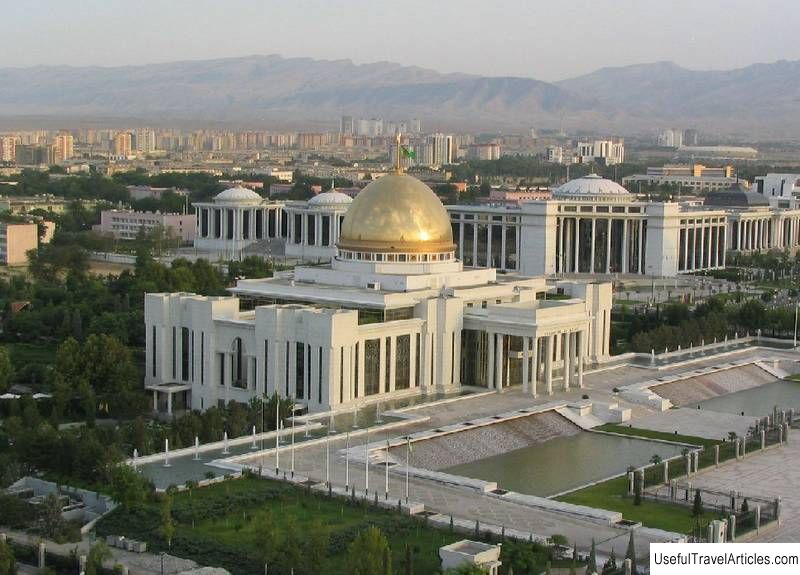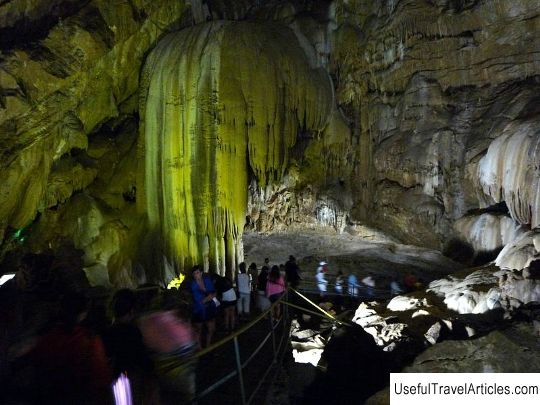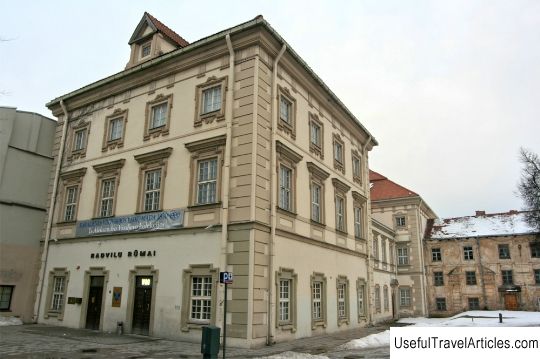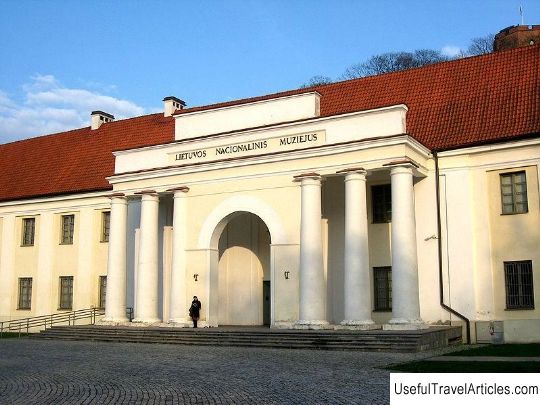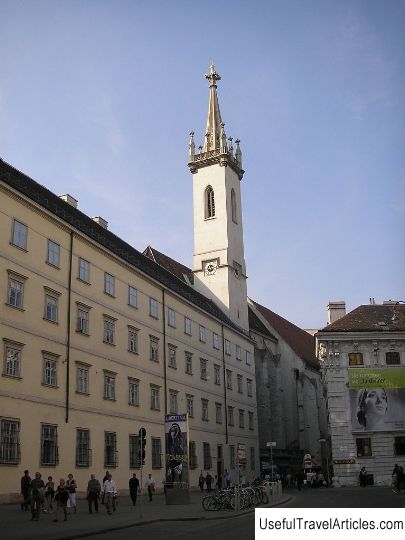Presidential Palace (Prezidento rumai) description and photos - Lithuania: Vilnius
Rating: 7,6/10 (1001 votes) 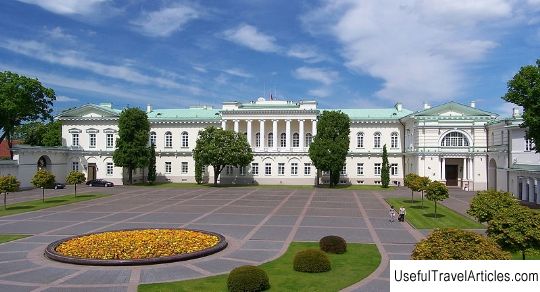
Presidential Palace (Prezidento rumai) description and photos - Lithuania: Vilnius. Detailed information about the attraction. Description, photographs and a map showing the nearest significant objects. The title in English is Prezidento rumai. Photo and descriptionThe Presidential Palace is the officially recognized residence of the President of the Republic of Lithuania. The luxurious palace is located in the capital of Lithuania - Vilnius. It was built on Simonas Daukantas Square, named after a graduate of Vilnius University who was the first to write the history of Lithuania in Lithuanian. The square has a particularly solemn appearance thanks to the baroque decoration of the towers towering over the rooftops. Starting from the 16th century, the residence of the Vilnius bishops was located in the building of the Presidential Palace. As soon as Lithuania was baptized, the Lithuanian prince Jagailo decreed the establishment of the Vilnius episcopate and presented him with the land on which the palace ensemble is now located. At this place, then the chambers of Gashtold were located, which were placed under the authority of Catholic bishops. In 1530, the episcopal house was destroyed by fire, then the bishops began to live where the presidential palace is now located. In the 17-18 centuries, the palace burned several times and was also plundered. For these reasons, the building has been restored more than once. The reconstruction of the palace was carried out in 1792, which was carried out by Laurinas Gucevicius. As soon as the third partition of the Polish-Lithuanian Commonwealth was carried out, the Lithuanian principality became part of the Russian Empire, and from 1795 the palace became the recognized residence of the Governor-General of the North-West edge, his place of service. Over time, the palace became a temporary place of residence for influential and dignitaries, for example, the palace was visited by: Paul I, Constantine and Alexander - his sons, Stanislav August Poniatowski is the Polish king, Friedrich Wilhelm III is the Prussian king. By 1804, the Presidential Palace was expanded under the leadership of the provincial architect KA Shilhaus. By order of Alexander I, the architecture of the palace was also changed. To realize the intended goal, some university buildings had to be demolished in order not to block the street. The eastern part of the building was completely built, and the western part was simply added. Construction work was completed only by 1827, but the arrangement of the interior lasted until 1832. Since that time, the building has acquired its present appearance. In the courtyard of the Presidential Palace since 1819, a house church, named after Prince Alexander Nevsky, operated. It was rebuilt during the reconstruction in 1903. Oak icon cases were located near two kliros, which stood with icons of St. Alexander Nevsky and the Holy Mother of God. These icons were donated by officials in honor of the deliverance of Alexander I from a premeditated assassination attempt in Paris, as well as the salvation of the royal family during a train crash in Borki. From 1901 to 1905, the Museum of Count M.N. .. the motive for its creation was the exhibition dedicated to him, held in the public Vilnius library, and also timed to coincide with the opening of the monument to Ant on the square. The commission under the leadership of Beletsky was in charge of all the affairs of the museum. The head of the museum was V.G. Nikolsky, and an associate member - V.A. Gringmouth. The museum has collected various items that belonged to the era of Muravyov: two armchairs, a desk, a cane, seals and much more that belonged to him. The museum was opened only twice a week so that tourists could visit it. As for the architecture of the Presidential Palace, it was built in the style of late classicism. The architecture of the building has clear volumetric forms, regularity of planning, as well as symmetric-axial compositions and monumental columns. The building has the shape of a rectangle with three projections. The main facade of the building faces the square, but the facade overlooking the courtyard is also especially solemn. The risalits on the main facade are linked by Doric columns in a single row. The internal structure of the palace is the arrangement of rooms along the corridor system on the ground floor. The second floor contains the enfilade system of rooms typical for palaces of this kind.         We also recommend reading Aquarium of Genoa (Acquario di Genova) description and photos - Italy: Genoa Topic: Presidential Palace (Prezidento rumai) description and photos - Lithuania: Vilnius. |
